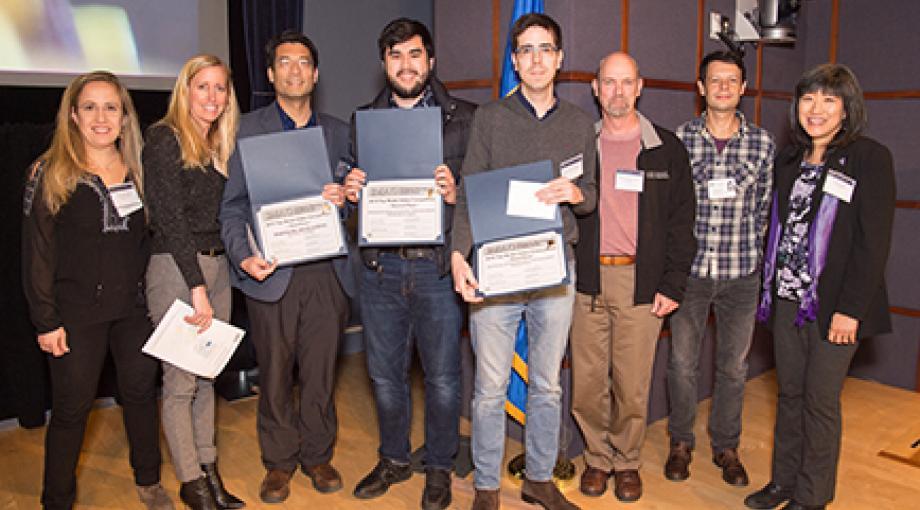Background & Motivation:
Our multiscale modeling community does amazing, world-changing research, and in order to maximize its impact we are compelled to share it with the lay public and within our own community. In order to facilitate this sharing, IMAG’s Public Dissemination & Education (PDE) Task Force has launched this inaugural NEXT TOP MODEL Video Competition. We invite anyone who is doing research related to computational modeling to produce a short, promotional and educational video that describes your research and its impact for a lay audience (i.e. 5th grade education level).
Submitted videos will be eligible for posting on IMAG’s YouTube channel, and judged according to the rubric below by a panel of judges, including the co-leads of the PDE Task Force (Shayn Peirce-Cottler, Silivia Blemker, David Basanta, and Andrew McCulloch), high school science teachers, and high school students. Prizes (listed below) will be awarded to the top three videos.
Example video from Silvia Blemker and Shayn Peirce-Cottler’s U01 project: https://www.youtube.com/watch?time_continue=126&v=qOfZpZQpxIw
Additional inspiration/examples can be found here:
https://www.nibib.nih.gov/training-careers/undergraduate-graduate/design...
Rules for the Competition:
- Must be an original video made to showcase the research project
- Must be less than 4 min. in length
- Must prominently showcase the role of computational modeling in the research
- Must be appropriate for a lay audience (i.e. 5th grade education)
- Must be willing to post the video on YouTube
- Meets 508 compliant accessibility standards, meaning that video has captions, or willingness to provide a transcript if the video is selected as one of the top three prize winners.
UPDATED Deadline for submitting video: MARCH 1st, 2019 (email your video or a link to your video to shayn@virginia.edu)
Judging: Videos will be judged on a score of 1 (worst) to 100 (best) based on the following rubric:
. Originality & creativity (20 points)
. Educational value (20 points)
. Comprehensible by a lay audience (20 points)
. Prominently features computational modeling for biological/medical applications (20 points)
. Highlights the real-world impact of the research (20 points)
Prizes: Winners will be announced at the 2019 IMAG-MSM Meeting in March:
1st place: $200 Gift Certificate to Amazon and video posted to IMAG’s website*
2nd place: $100 Gift Certificate to Amazon and video posted to IMAG’s website*
3rd place: $50 Gift Certificate to Amazon and video posted to IMAG’s website*
*https://www.nibib.nih.gov/research-funding/interagency-modeling-and-anal...
Winners:
Interventions to Reduce the Incidence of Childhood Obesity First Place
Modeling the obesity epidemic. Researchers from the Johns Hopkins University develop multiscale models to identify interventions to reduce the incidence of childhood obesity.
Multiscale Modeling of Infection Second Place
Modeling macrophage heterogeneity in Salmonella infection. Researchers at the Allen Discovery Center at Stanford University in Collaboration with the University of Virginia study salmonella infections and identify ways to combat antibiotic resistance using multiscale modeling.
Silk Integrated Theory Theory Experiment Project Third Place
Modeling the silk integrative theory experiment project. A research team from Tufts University and the Massachusetts Institute of technology (MIT) use multiscale modeling to design novel biomaterials for tissue engineering and drug delivery.
Multiscale Modeling in Sickle Cell Disease Fourth Place
A research team led by Dr. Karniadakis at Brown University uses multiscale modeling to study how sickle cell disease causes tissue and organ damage.


